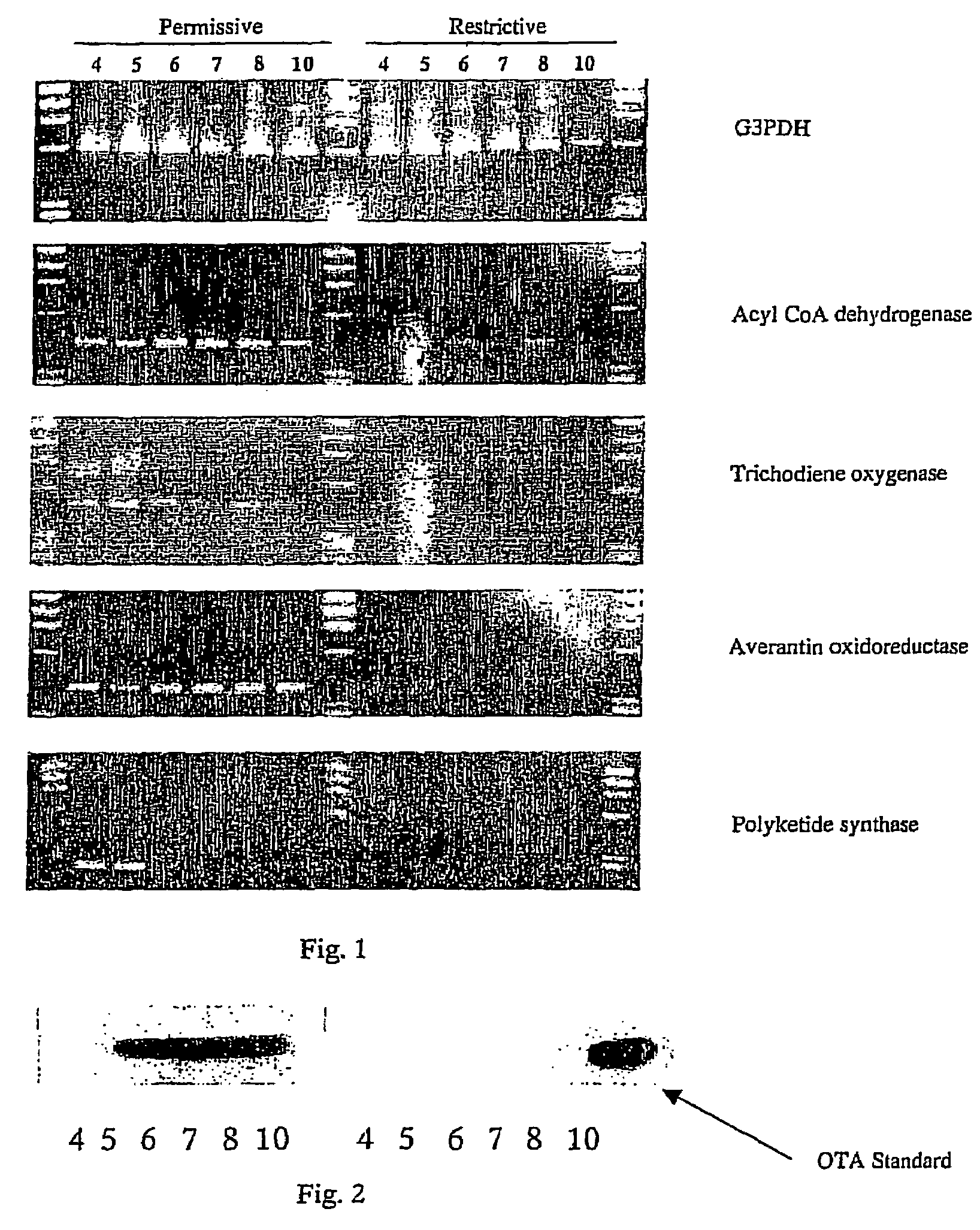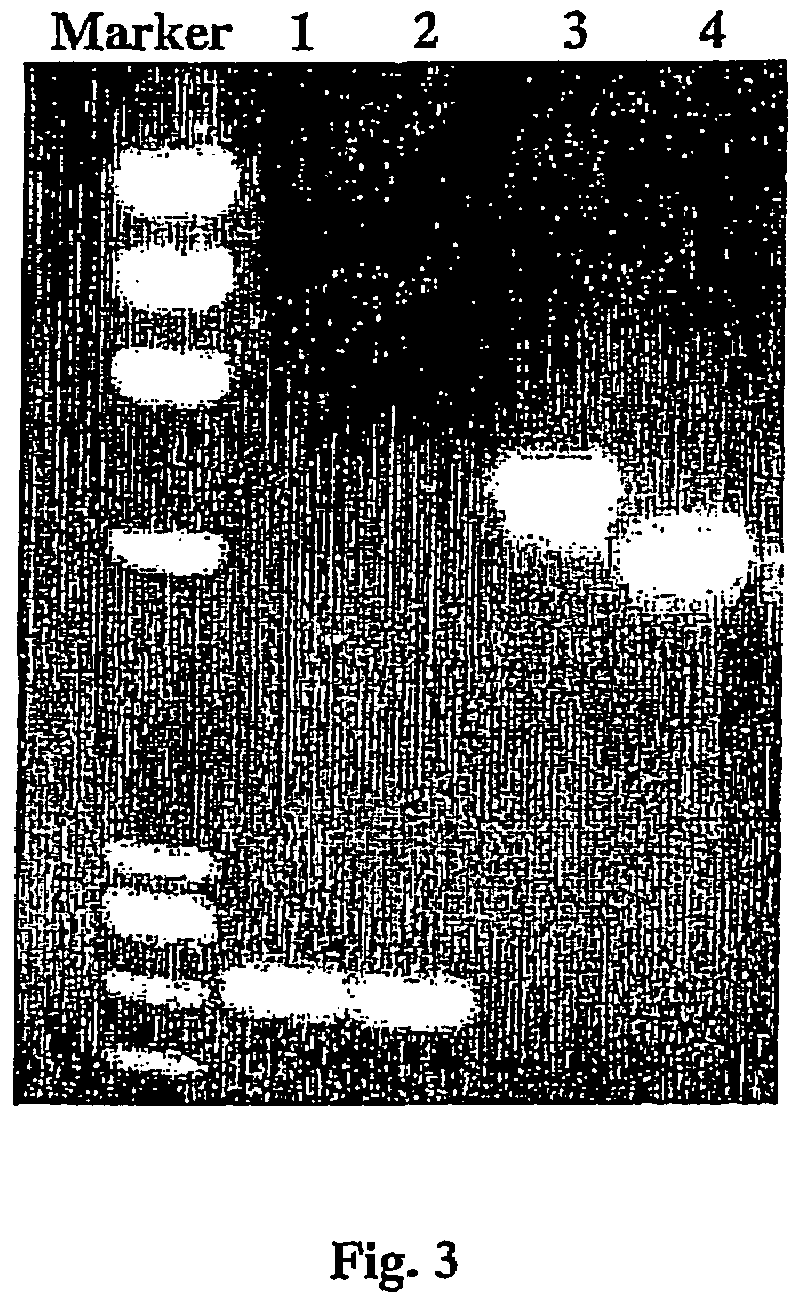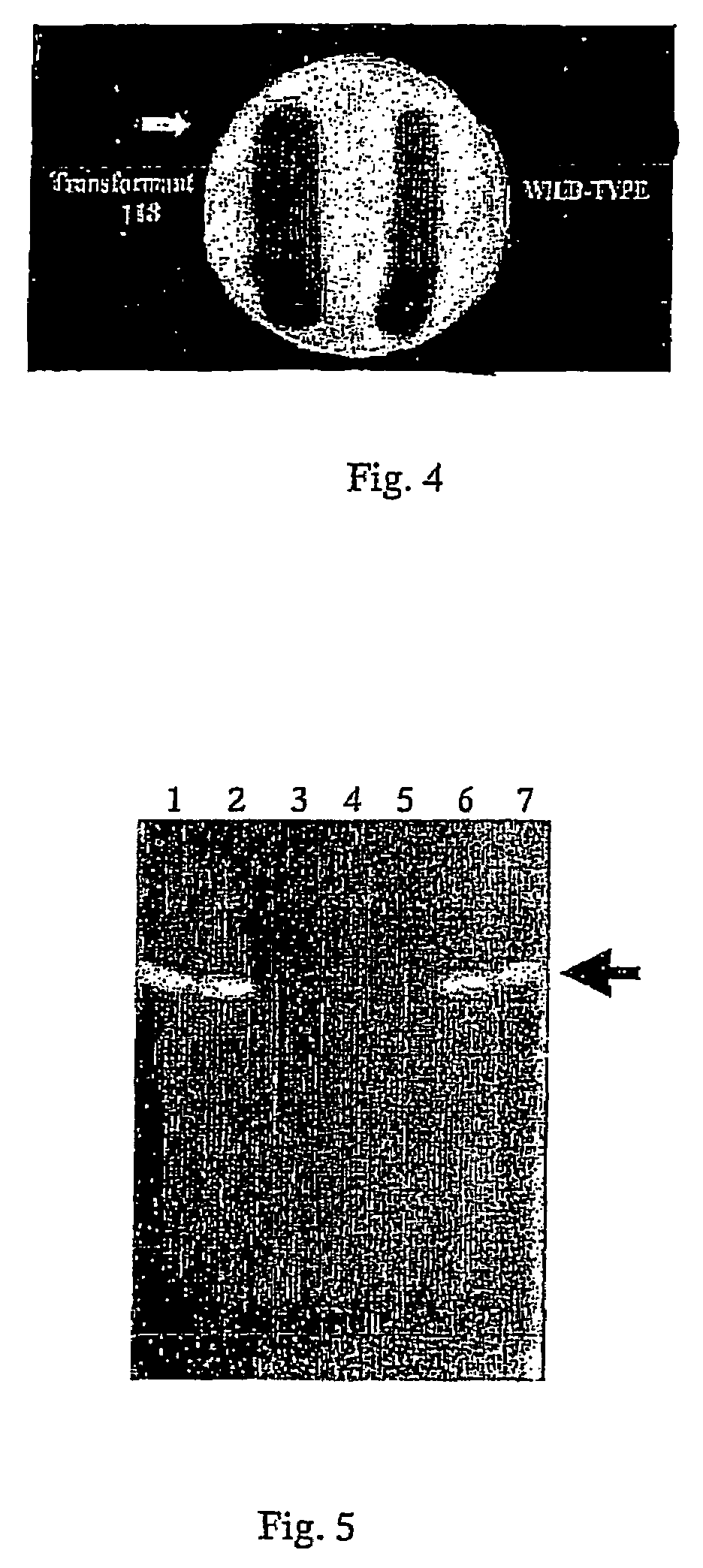Detection of ochratoxin A producing fungi
a technology of ochratoxin and producing fungi, which is applied in the field of detection of ochratoxin a producing fungi, can solve the problems of time-consuming methods, labor-intensive, and high cost, and achieves the effects of reducing the number of experimental results, and improving the detection efficiency
- Summary
- Abstract
- Description
- Claims
- Application Information
AI Technical Summary
Benefits of technology
Problems solved by technology
Method used
Image
Examples
Embodiment Construction
[0037]The invention provides isolated nucleotide sequences and genes expressed by fungal cells producing OTA and believed to be involved in the biosynthetic pathway for OTA biosynthesis.
[0038]The invention also provides detection methods based on these isolated nucleotide sequences to detect the presence of fungi producing OTA in a sample.
[0039]The detection methods of the invention provide simple and more rapid assays for the detection of ochratoxigenic fungi and have significant advantages over the detection methods currently available.
[0040]To date the biosynthetic pathway for OTA biosynthesis has not been characterised. However, the cloning and characterisation of the genes of the invention greatly increases the understanding of the biosynthetic pathway. The cloning and molecular characterisation of mycotoxin biosynthetic genes is vital in order to gain a fuller understanding of the organisation, regulation and expression of these genes.
[0041]In the invention suppression substra...
PUM
| Property | Measurement | Unit |
|---|---|---|
| time | aaaaa | aaaaa |
| body weight | aaaaa | aaaaa |
| morphological characteristics | aaaaa | aaaaa |
Abstract
Description
Claims
Application Information
 Login to View More
Login to View More - R&D
- Intellectual Property
- Life Sciences
- Materials
- Tech Scout
- Unparalleled Data Quality
- Higher Quality Content
- 60% Fewer Hallucinations
Browse by: Latest US Patents, China's latest patents, Technical Efficacy Thesaurus, Application Domain, Technology Topic, Popular Technical Reports.
© 2025 PatSnap. All rights reserved.Legal|Privacy policy|Modern Slavery Act Transparency Statement|Sitemap|About US| Contact US: help@patsnap.com



